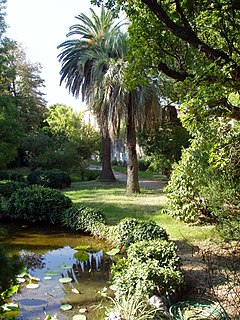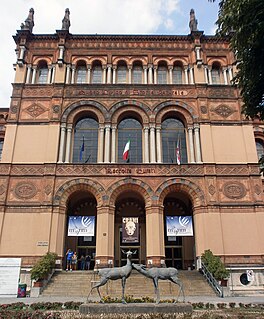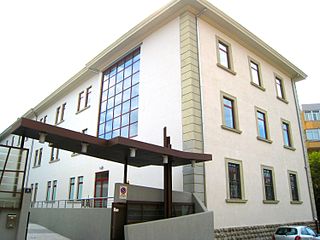Museo di Storia Naturale di Firenze | |
 Fossils in the Museo di Geologia e Paleontologia | |
| Established | February 21, 1775 |
|---|---|
| Location | Florence, Italy |
| Type | natural history museum |
| Website | www |


The Museo di Storia Naturale di Firenze is a natural history museum in 6 major collections, located in Florence, Italy. It is part of the University of Florence. Museum collections are open mornings except Wednesday, and all day Saturday; an admission fee is charged.

Natural history is a domain of inquiry involving organisms including animals, fungi and plants in their environment; leaning more towards observational than experimental methods of study. A person who studies natural history is called a naturalist or natural historian.

Florence is the capital city of the Italian region of Tuscany. It is the most populous city in Tuscany, with 383,084 inhabitants in 2013, and over 1,520,000 in its metropolitan area.

Italy, officially the Italian Republic, is a country in Southern Europe. Located in the middle of the Mediterranean Sea, Italy shares open land borders with France, Switzerland, Austria, Slovenia and the enclaved microstates San Marino and Vatican City, as well as a maritime border with Croatia. Italy covers an area of 301,340 km2 (116,350 sq mi) and has a largely temperate seasonal and Mediterranean climate. With around 61 million inhabitants, it is the fourth-most populous EU member state and the most populous country in Southern Europe.
Contents
The museum was established on February 21, 1775 by Grand Duke Pietro Leopoldo as the Imperial Regio Museo di Fisica e Storia Naturale. At that time it consisted of several natural history collections housed within the palazzo Torrigiani on Via Romana. Through the past two centuries, it has grown significantly and now forms one of the finest collections in Italy.

Leopold II was Holy Roman Emperor, King of Hungary, and Bohemia from 1790 to 1792, and Archduke of Austria and Grand Duke of Tuscany from 1765 to 1790. He was the earliest opponent of capital punishment in modern history. He was a son of Emperor Francis I and his wife, Empress Maria Theresa, and the brother of Marie Antoinette, Queen of France and Joseph II, Holy Roman Emperor. Leopold was a moderate proponent of enlightened absolutism. He granted the Academy of Georgofili his protection.

















